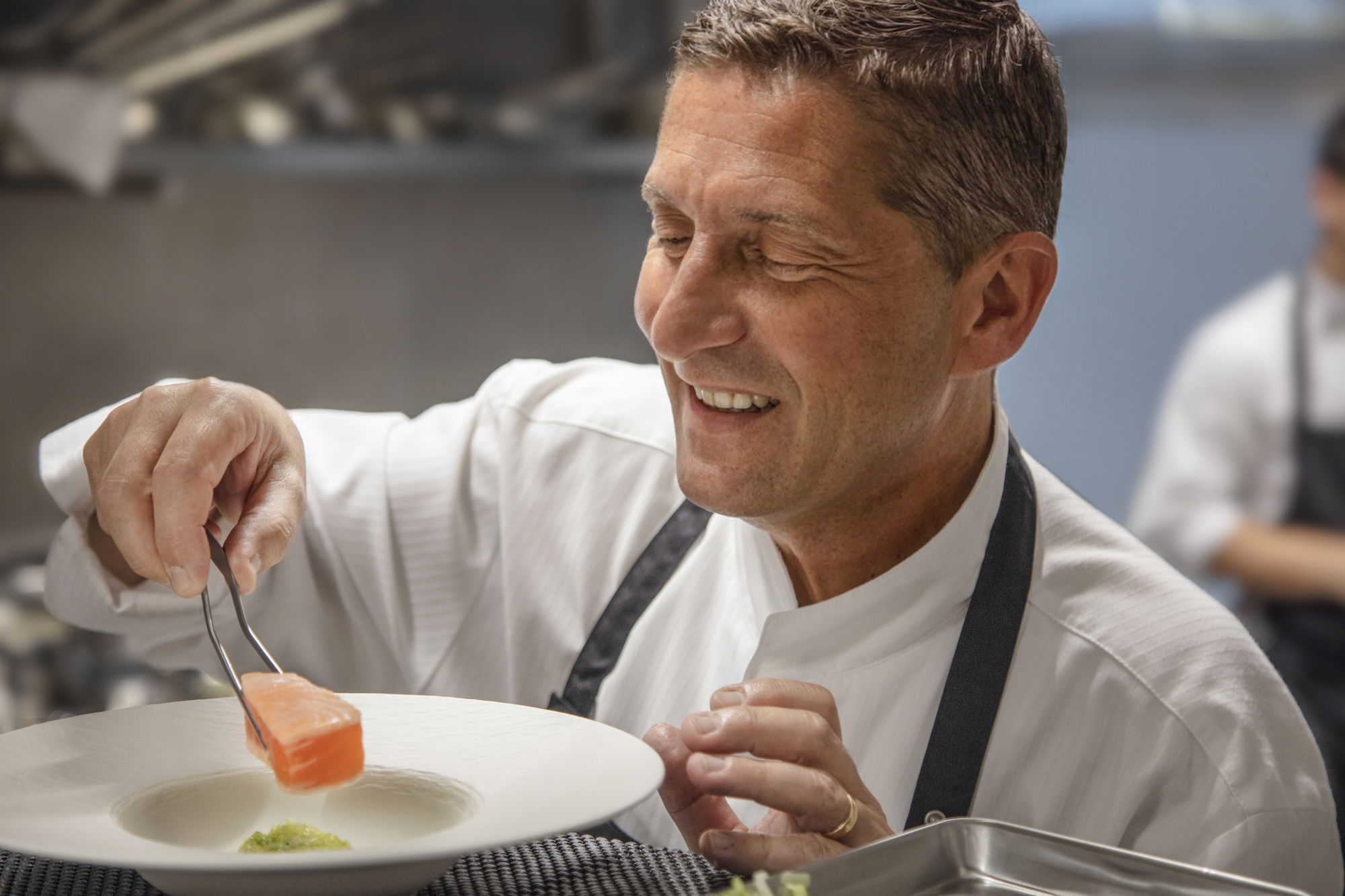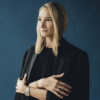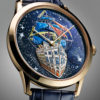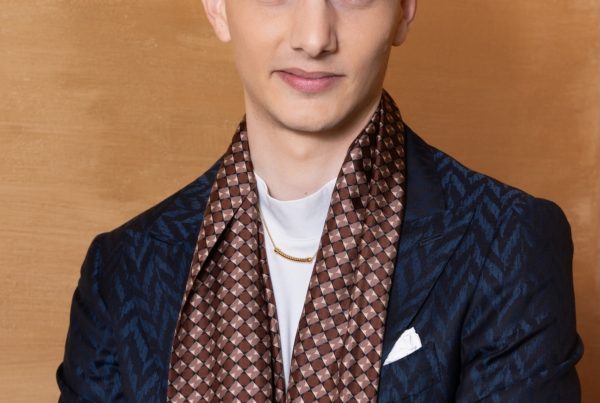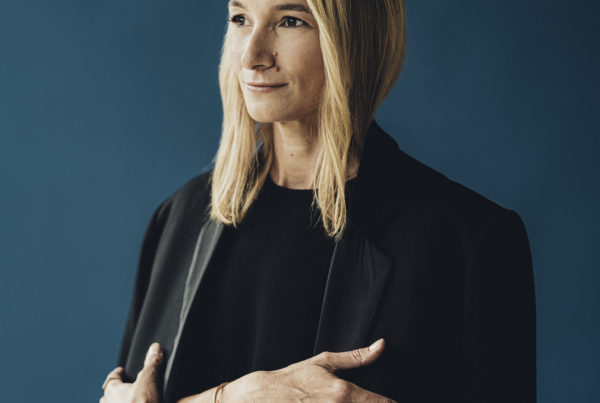François-Paul Journe and Dominique Gauthier: a sacred alliance
On November 1st, F.P.Journe Le Restaurant opened its doors, “a no-fuss gastronomic restaurant” as co-owner and master watchmaker François-Paul Journe describes it. To delight his customers, he called on Michelin-starred chef Dominique Gauthier, who worked for 31 years at the Le Chat-Botté restaurant in Beau Rivage, Geneva. An interview with the great chef whose virtuoso dishes have the power to stop time. Isabelle Cerboneschi

Until recently, Dominique Gauthier’s name was inextricably linked with that of Le Chat-Botté, the restaurant at Beau Rivage in Geneva. He spent 31 years there, giving it panache and earning it a Michelin star and 18/20 from Gault Millau. But that was before November 1st. Now, at number 49 rue du Rhône, at “F.P.Journe Le Restaurant“, named after the master watchmaker and co-owner of the premises, you can find him and try his cuisine. And what a cuisine it is! An enchanted interlude of flavour that delights both the eye and the taste buds. On the day of our visit, he had prepared an opening menu, the kind you remember for a long time.
For starters, a hare ravioli with white truffle and chestnut that melted on the tongue. Next, the first course was a salmon topped with caviar and adorned with a light beurre blanc. For the pièce de résistance, he had opted for poultry cooked at a low temperature with the skin lined with truffle stuffing and accompanied by a potato mille feuille topped with truffle shavings. As for the dessert, it was more cloud than chocolate mousse, with its perfect ice cream and sesame tuile. Each dish had its own rhythm, its own balance, like music, great music.
The wonderful thing about all this is that the good and the beautiful go hand in hand: the chef has chosen all his producers for their magnificent produce, their ethics and their proximity, as he explains in the interview below.
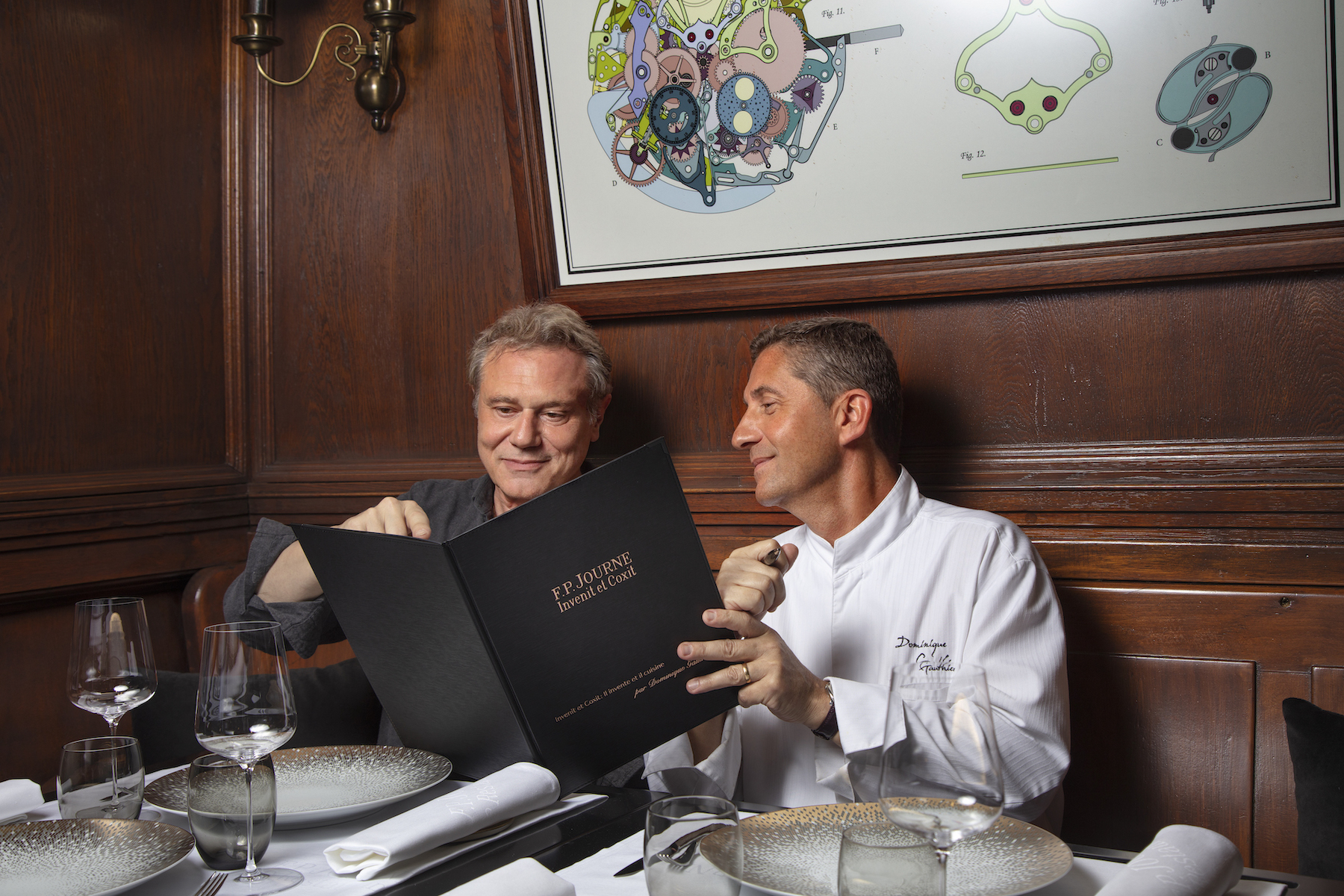
The meeting between Dominique Gauthier and François-Paul Journe was an obvious one: these two enthusiasts of know-how, craftsmanship and the highest standards were bound to sparkle together in a place with a long history. The restaurant, housed in a building that dates back to between 1852 and 1860, is a worthy descendant of Bavaria, a legendary Geneva brasserie in the Bierstube style that occupied the premises from 1912 and was frequented by members of the nearby League of Nations. The current décor, with its dark wood panelling, coffered ceilings and large mirrors on the walls, dates from 1942. It was designed by the architect Jean Falciola and the interior designer Louis Amiguet.
The place has been renamed many times: “Bavaria”, “Relai de l’Entrecôte”, “Le 49 Rhône”, “La Marjolaine”, to finally become “F.P.Journe Le Restaurant”. The master watchmaker didn’t just give his name to the 52-cover restaurant to give it a watchmaking touch: the walls are decorated with drawings of in-house calibres, the tables all bear the name of a watchmaking genius and the transparent cutlery reveals elements from movements: wheels, bridges, pinions, screws or hands. You’ll feel right at home here.
“Why do you go to a restaurant? It’s to eat. The atmosphere has to be pleasant, but above all the food has to be good,” says François-Paul Journe. « At the beginning of April, I told a friend that I was looking for a chef for the restaurant. He told me about Dominique Gauthier. Two weeks later we met, I explained my concept to him – “a gastronomic restaurant without the fuss” – and he got on board, and within five minutes we had an agreement. There’s a real parallel between the two of us: it’s like we’re in stereo. It’s miraculous ».
The brigade it is also exemplary, with a special mention for Pascal Brault, restaurant manager, with which Dominique Gauthier had already worked at Beau Rivage. Each person is to its place, nor too there, nor enough there, present when he or she must. Highly professional.
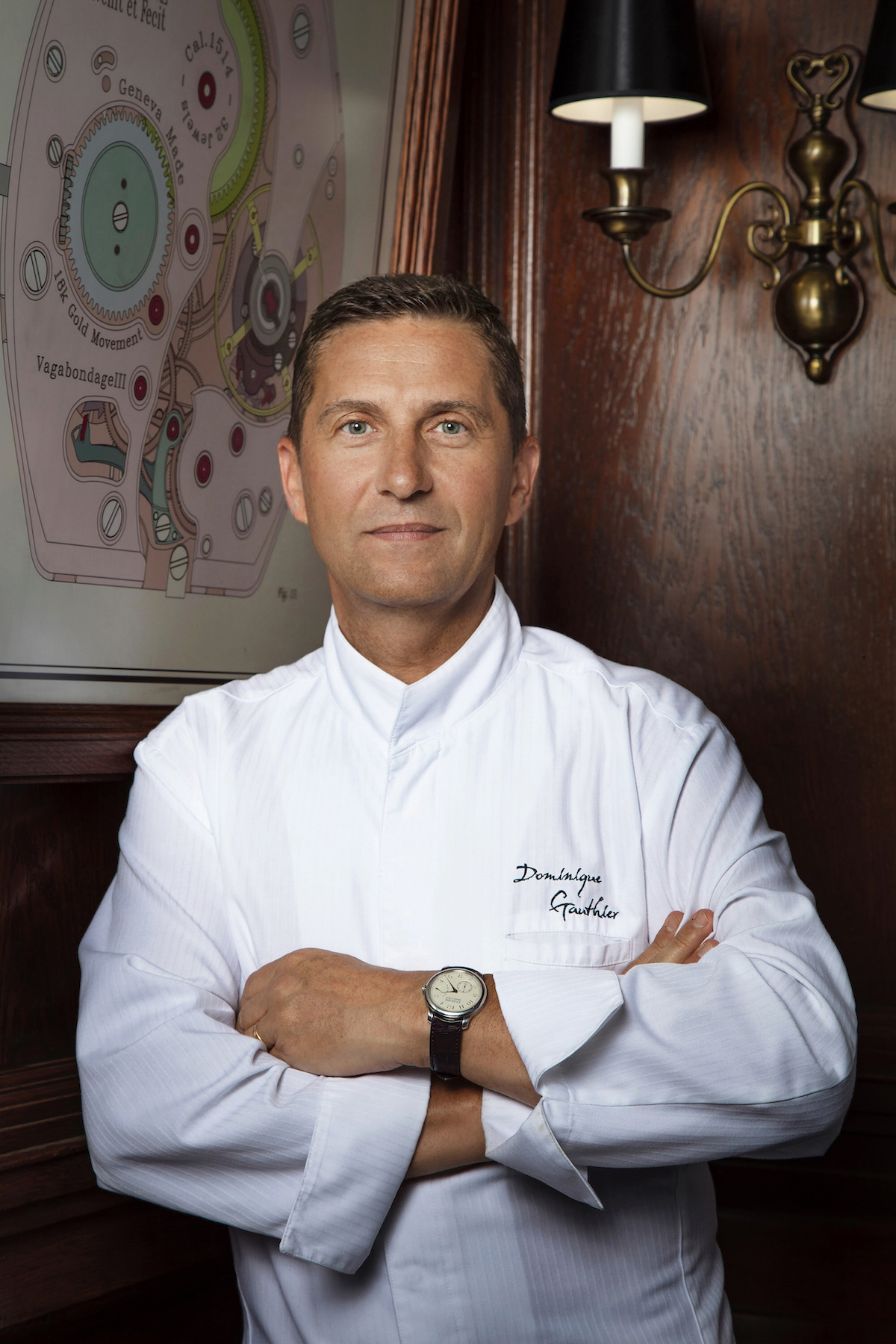
INTERVIEW
How did this restaurant come about?
Dominique Gauthier : It was born of a meeting. After the Covid and the sale of Beau Rivage, my wife and I took stock of my professional life. I’m going to be 57 and I wanted to do something different. I spoke to one of my customers who spoke to François-Paul Journe. The decision was made in August. At two o’clock in the morning I received a text message: “You have my phone number, I have yours, we’re going to do great things together”, he had written to me. I called François-Paul. We met up. I wanted my project to be compatible with his.
What was your project for this place?
I am and always have been a restaurateur. I started working in the kitchen at the age of 14 and moved to Geneva at the age of 25, after working in several Michelin-starred restaurants. The Mayer family welcomed me to Beau Rivage and, contrary to what was planned, I didn’t leave. What’s important to me is the well-being of my customers. Of course, what’s on the plate is very important, but I love entertaining and I want my customers to feel at home. To achieve this, I need qualified staff whom I trust and who know the Geneva clientele well and know how to welcome them. Everyone needs to have a balanced family life, and that’s difficult in the restaurant business. So I suggested to François-Paul that we should open from Monday to Friday at midday, so that the staff could have a proper weekend and only one type of customer: François-Paul’s and mine. He agreed. He presented me with his vision of the layout, designed the table tops with a slot for the tablecloth, we chose the tableware together and it all came together like a jigsaw puzzle.
What did you want to emphasise on the menu?
François-Paul gave me carte blanche. His only wish was that there should be beef on the menu. I’ve always given preference to craftsmen. And so has he.
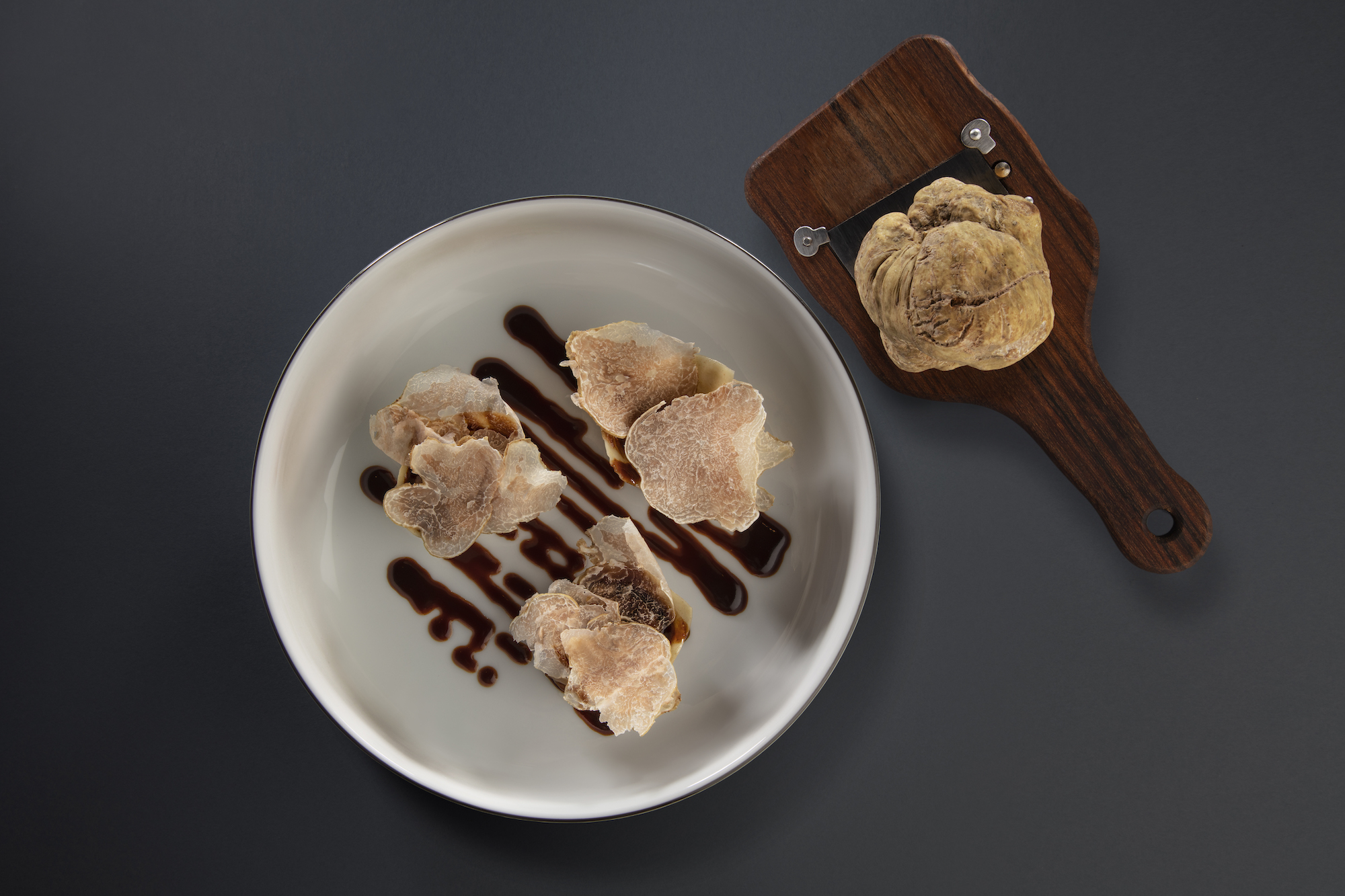
At lunchtime, you introduced us to hare ravioli, salmon and poultry with an extraordinarily tender truffle stuffing. How did you prepare them?
The ravioles were made from hares hunted in France, with chestnuts and white truffles. This dish has a lot to do with my history: my father was a hunter, a fine marksman, and my grandfather loved to take me chestnut picking. Then you had organic Swiss salmon, farmed in Lostallo in the Grisons. The tanks are filled with glacier spring water. This is the first sustainable Swiss salmon. I’ve been working with this product for about four years. The citrus fruit comes from the farm of Niels Rodin, the great-great-nephew of the sculptor Auguste Rodin and a citrus grower in Borex. The poultry is free-range at the Domaine du Nant-d’Avril in Satigny and each hen lives for at least 90 days.
How do you achieve such tender poultry?
You steam it for half an hour at 70 degrees. You leave it to rest for two hours and then you gently lacquer it with live heat on the skin so that it’s crispy and glazed. It is stuffed under the skin with a truffle stuffing. Alongside, we made a crispy potato millefeuille: it’s like a gratin that you cut into slices and fry in clarified butter, so you get the crispiness of the potato but also its melt-in-the-mouth texture.
Where does your beef come from?
From the Desbiolles family in Meinier. They have 250 head of Aubrac cattle. For six months of the year, they are taken out to pasture on the Salève. Only one or two cows are killed each month, and only when the time is right. The animals have not been stressed. Mister Desbiolles, the father, had taken me to see them. He explained to me that a month before killing them, he made them eat corn soufflés, as if to say to them: “Indulge yourself, my beauty”. He came to my table at Beau Rivage, wearing his boots, when I wasn’t yet working with him. He asked me to cook only beef for him, to see how I prepared it. He didn’t speak during the meal, and when he left the table he said to me: “Now that I know you, we can work together”. He wanted to taste my cooking first before agreeing to sell me his meat.

And this chocolate dessert, light as a cloud, how did it come about?
It’s also a question of friendship. I was part of a support committee that took me to visit a chocolate factory, Orfève, in Satigny. When I tasted their chocolate, I felt a real emotion. I asked to see the beans and ended up buying from them for the hotel and for my desserts. The dessert was a chocolate crumble: a milky chocolate ice cream with Gruyère cream, then I made a very dark chocolate mousse that I put in a siphon for lightness. Did you taste it? Super strong! And all this with sesame seeds. That’s what happiness is all about: bringing Geneva’s artisans to life.
Are you aiming for a star?
That’s not our main aim, because that would be like starting an episode all over again. What François-Paul and I are aiming for is to please our customers. To create a friendly place where you feel good, simply good.
